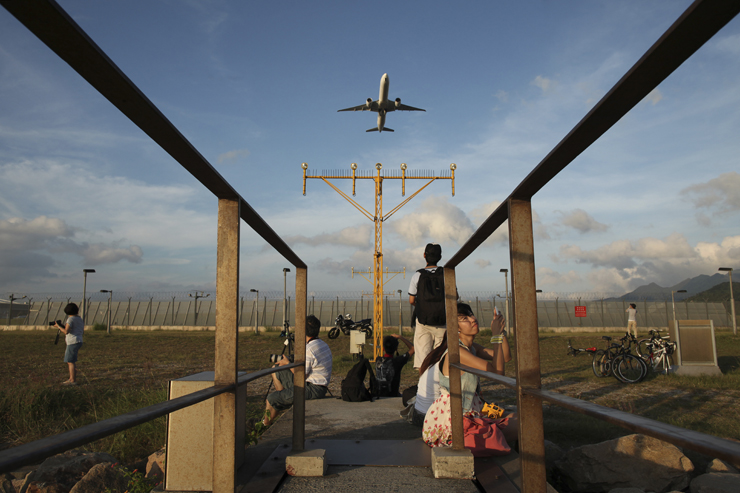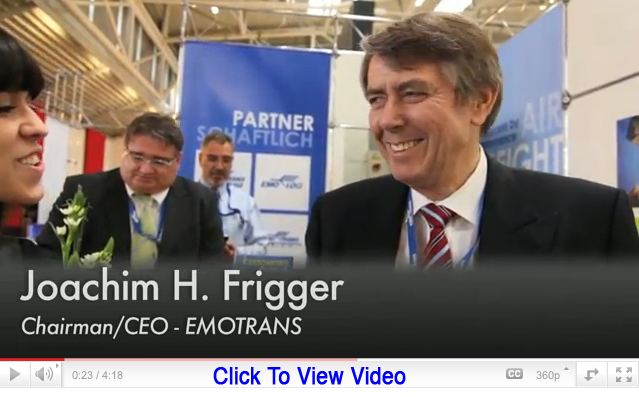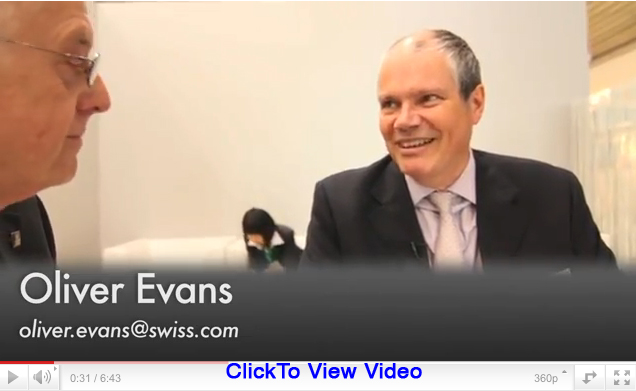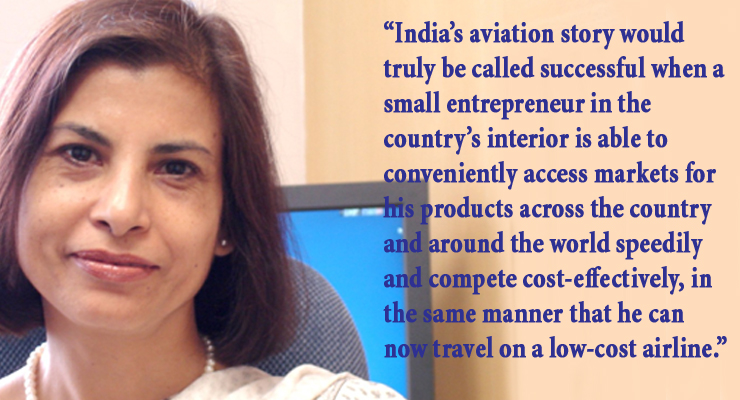|


People watch as an aircraft takes off from Hong Kong International
Airport on June 5, 2011. Citing an increase in air traffic demand on
the back of strong economic growth in Asia, the city's Airport Authority
said it had to find ways to increase the capacity of the airport as
current facilities were expected to be saturated by 2020. A proposed
third runway would enable the airport to handle a maximum of 620,000
flights a year, the authority said, though environmental groups have
expressed concern over the plan, which they say would threaten an area
popular with endangered Chinese white dolphins.
Does Hong Kong International Airport
need a third runway? The responding cry from stakeholders is resounding
and shrill—we want it; we need it; we must have it!
Construction of a third runway was one
of two options put forward by Airport Authority Hong Kong (AAHK) at
the start of June, when it called for public and stakeholder feedback
on its 20-year development blueprint for HKIA. Hong Kong International
Master Plan 2030 outlines the alternative to a third runway as a medium-term
plan to upgrade terminal and apron capacity at its existing two runways,
a proposal almost universally greeted with disdain within the airline
industry as a an expensive HK$23.4 billion (USD$3 billion) Band-Aid.
The third runway option will require the
reclamation of about 650 hectares of land lying north of the existing
airport island. At a cost of HK$86 billion, it will increase capacity
to meet estimated demand of 620,000 flights per year, 97 million passengers
and 8.9 milllion tons of cargo by 2030.
The Master Plan 2030 consultation process
will end on September 2, but the clock is ticking on how best to move
forward – slots at HKIA are already in short supply, construction
of a third runway is likely to take ten years and AAHK admits that current
capacity will be saturated by 2020.
Once the consultation process is complete,
AAHK will submit a recommendation to the Hong Kong government, which
will make the final decision.
Given that HKIA handled some 4.17 million
tons in 2010, nudging it ahead of Memphis to become the largest cargo
airport in the world by tonnage, the debate about investments in its
future capacity has global ramifications, but the sub-plot is all about
regional market share.
Giovanni Bisignani, IATA Director General
and CEO, said a third runway was the only way Hong Kong could remain
“a great place for businesses to serve both China and the region.”
Andrew Herdman, AAPA Director General, said that construction would
need to start soon “if Hong Kong is to maintain its competitive
edge.” Hong Kong Air Cargo Terminals Limited (HACTL), the leading
cargo handler at HKIA by volume, went further still, warning that failure
to proceed would see Hong Kong lose its “status as a premier air
cargo hub for the region.”
Forwarders and cargo airlines just love
to funnel shipments through Hong Kong to global and regional markets.
HKIA offers unrivalled international connectivity and cargo processing
service quality, while its cluster of airlines and forwarders benefit
from the ability to co-load and consolidate, which allows them to optimize
space and protect margins.
The Pearl River Delta region of southern
China, for example, produces over 25 percent of the country’s
exports and more than 10 percent of its industrial output and is within
easy reach of domestic airports with international connections at Guangzhou
and Shenzhen. However, one CEO at a major forwarder told ACN that although
uplift rates were frequently cheaper from Chinese rivals in comparison
to HKIA, almost 90 percent of its air freight was still trucked to Hong
Kong due to its unrivalled efficiency, clear regulations, and excellent
ground handling and customs services.
“Hong Kong’s future as a key
air cargo hub is heavily dependent on its ability to speed intermodal
transport by land, sea or air between HKIA and factories in South China
- that’s a big USP for them,” said another forwarding executive
based in southern China.
But that advantage is gradually being
eroded. Chinese and foreign airlines are boosting international service
options from domestic airports, while much effort is being made by the
authorities to improve the regulation and processing of cargo at gateways.
As factories in China move inland in search of lower operating costs,
huge investment in rail and road links to China’s airports are
also improving overland transit times to major domestic hubs.
The China market is also evolving in other
ways that will spur air cargo demand in the future, further raising
the stakes for HKIA. The Chinese government is encouraging producers
to move up-market rather than compete solely on price, while rising
imports are a growing part of the equation. UPS and FedEx cited both
trends as pull factors for establishing new hubs in recent years at
Shenzhen and Guangzhou, respectively. The integrators also stressed
that being closer to their customers in China would improve service
levels in the shape of extended cut-off times for long-haul and intra-Asia
services.
 Both
Shenzhen and Guangzhou have ambitious plans to expand by building additional
runways, but HKIA is not only competing with airports in southern China
for air cargo volumes. Additional capacity will be built at Shanghai,
and a third runway is expected to be in place at Bangkok’s Suvarnabhumi
airport by 2016. Ambitious expansion projects are also in place at Changi
Airport in Singapore, Taiwan’s Taoyuan airport and Incheon International
Airport in Korea. Indeed, the latter will have five runways in place
by 2020. Both
Shenzhen and Guangzhou have ambitious plans to expand by building additional
runways, but HKIA is not only competing with airports in southern China
for air cargo volumes. Additional capacity will be built at Shanghai,
and a third runway is expected to be in place at Bangkok’s Suvarnabhumi
airport by 2016. Ambitious expansion projects are also in place at Changi
Airport in Singapore, Taiwan’s Taoyuan airport and Incheon International
Airport in Korea. Indeed, the latter will have five runways in place
by 2020.
Growing competition from rival hubs and
runway capacity constraints at HKIA make investment in a third runway
an “urgent requirement if Hong Kong is to retain its pre-eminent
hub status,” according to Cathay Pacific, which claimed that Hong
Kong’s whole status as an international aviation and economic
center would be at risk if it was not built.
AAHK is fully aware just how high the
ante has now risen, both for the airport and Hong Kong itself. “If
HKIA does not expand, or fails to expand in a timely manner, to meet
our future aviation traffic demand, there will be adverse consequences,”
said Stanley Hui, (right) Chief Executive Officer. “The immediate
impact would be on HKIA’s connectivity with the world, because
with constrained capacity, HKIA would have to turn away traffic, possibly
resulting in the airport serving fewer destinations.”
Let the consultations begin…
Sky King/Flossie |




